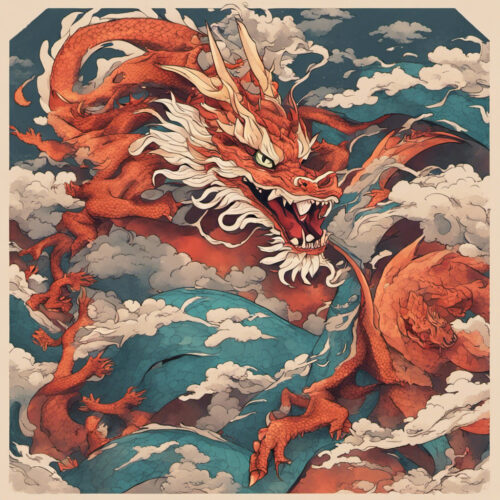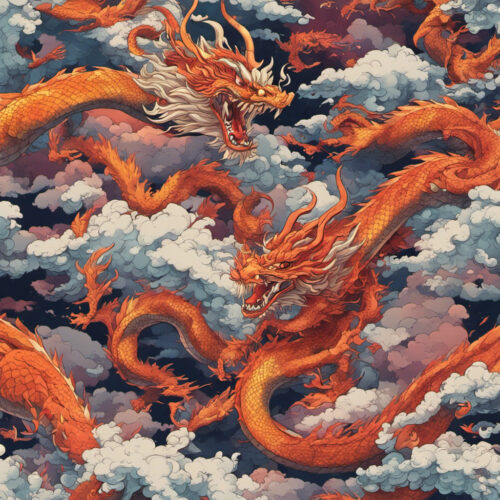Dragons have always fascinated human imagination across different cultures and mythologies. Among the myriad of dragon legends around the world, Japanese dragons hold a special place with their captivating stories and unique characteristics. In this article, we will embark on a journey through the enchanting world of Japanese dragons, unveiling their mystical legends and exploring the rich cultural significance they hold in Japan.
The Symbolic Nature of Japanese Dragons
Japanese dragons, known as “Ryū” or “Tatsu” in Japanese, symbolize power, wisdom, and good fortune. Unlike their Western counterparts, Japanese dragons are depicted as serpentine creatures with elongated bodies and sharp claws. They often have colorful scales and can have multiple heads, each representing a different virtue or power.
The Japanese people have long revered dragons and consider them auspicious creatures. Many believe that dragons possess the ability to control natural elements such as water and rain, making them essential for agriculture and prosperity. This association with water also highlights their role as guardian spirits of rivers, lakes, and seas.
The Legends of Japanese Dragons
Japanese mythology is replete with fascinating tales featuring dragons, where they often play pivotal roles in shaping the world. One such legend is the story of the Dragon God, Ryūjin. According to mythology, Ryūjin resides at the bottom of the sea and protects the magical pearl, known as the “Ryūgū no tama.” This pearl grants immense power to whomever possesses it and is often sought after by brave heroes and cunning villains alike.
Japanese dragons are also closely associated with the Shinto religion, one of Japan’s oldest belief systems. In Shinto, dragons are revered as deities and are believed to be heavenly beings capable of transformation and enlightenment. The most famous dragon from Shinto mythology is the legendary dragon Orochi, known for its monstrous appearance with eight heads and eight tails. Orochi was finally defeated by the brave warrior Susanoo, who freed the land from the dragon’s reign of terror.
The Cultural Significance of Japanese Dragons
Japanese dragons have left an indelible mark on Japanese culture, finding their way into various art forms, festivals, and rituals. Traditional Japanese art often portrays dragons as fierce yet graceful creatures, capturing their essence in beautiful paintings, sculptures, and tapestries. These dragon motifs can be found in temples, palaces, and even on everyday items like kimonos and pottery.
One of the most famous festivals in Japan, the Dragon Boat Festival, takes place annually in honor of these mythical creatures. During this event, vibrant dragon-themed boats race through rivers, accompanied by festive music and cheering spectators. The festival is believed to bring good luck and ward off evil spirits.
Exploring the Enchanting World of Japanese Dragons
To truly immerse yourself in the captivating world of Japanese dragons, we recommend watching this mesmerizing video showcasing the beauty and symbolism of these mythical creatures:
As you can see, Japanese dragons continue to captivate our imagination and inspire awe with their rich legends and symbolism. Exploring their enchanting world allows us to delve deeper into the vibrant tapestry of Japanese culture and appreciate the enduring legacy of these majestic creatures.
For further reading on Japanese dragons, we recommend visiting these external links:



